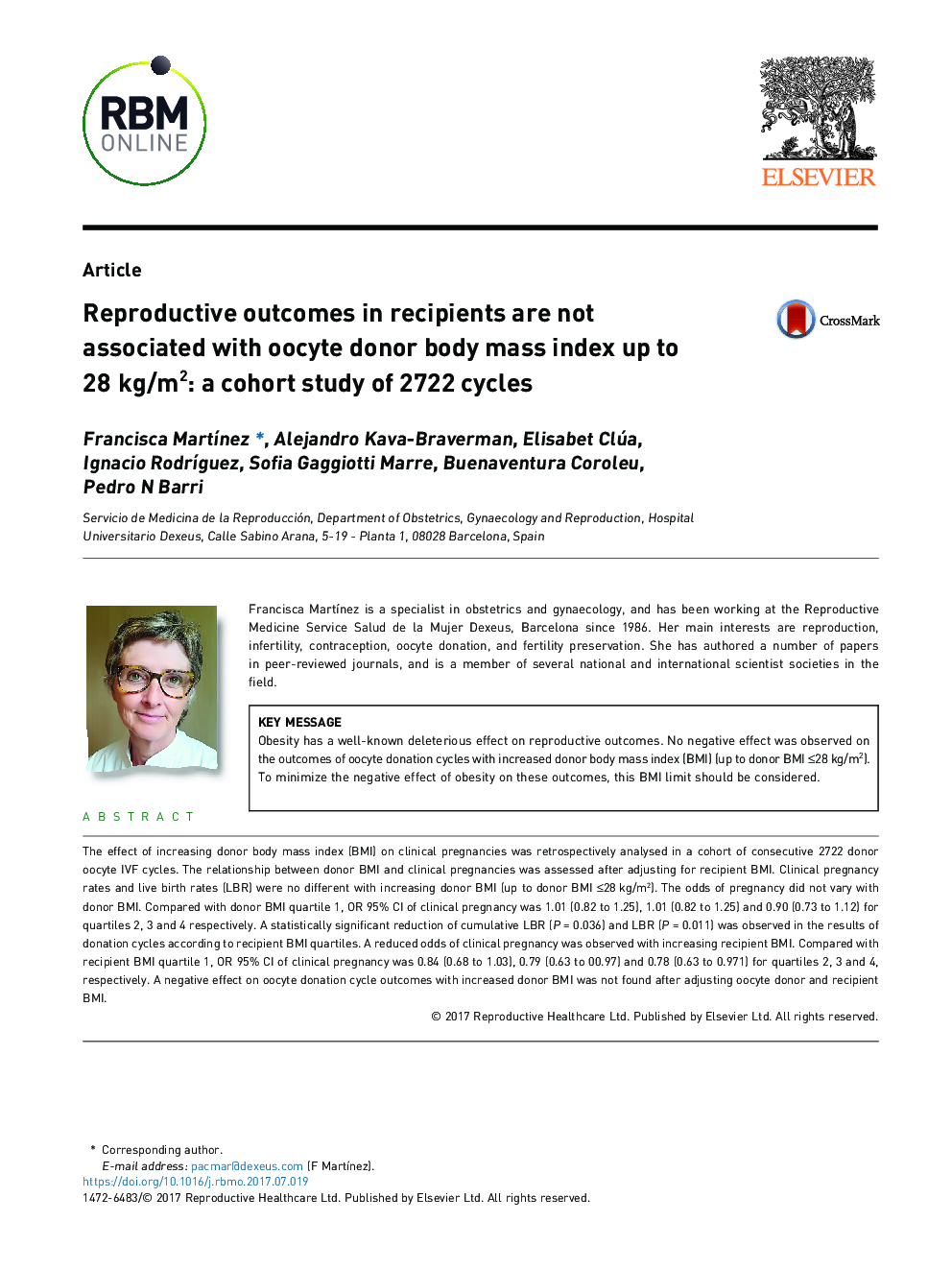| Article ID | Journal | Published Year | Pages | File Type |
|---|---|---|---|---|
| 8784131 | Reproductive BioMedicine Online | 2017 | 8 Pages |
Abstract
The effect of increasing donor body mass index (BMI) on clinical pregnancies was retrospectively analysed in a cohort of consecutive 2722 donor oocyte IVF cycles. The relationship between donor BMI and clinical pregnancies was assessed after adjusting for recipient BMI. Clinical pregnancy rates and live birth rates (LBR) were no different with increasing donor BMI (up to donor BMI â¤28âkg/m2). The odds of pregnancy did not vary with donor BMI. Compared with donor BMI quartile 1, OR 95% CI of clinical pregnancy was 1.01 (0.82 to 1.25), 1.01 (0.82 to 1.25) and 0.90 (0.73 to 1.12) for quartiles 2, 3 and 4 respectively. A statistically significant reduction of cumulative LBR (P = 0.036) and LBR (P = 0.011) was observed in the results of donation cycles according to recipient BMI quartiles. A reduced odds of clinical pregnancy was observed with increasing recipient BMI. Compared with recipient BMI quartile 1, OR 95% CI of clinical pregnancy was 0.84 (0.68 to 1.03), 0.79 (0.63 to 00.97) and 0.78 (0.63 to 0.971) for quartiles 2, 3 and 4, respectively. A negative effect on oocyte donation cycle outcomes with increased donor BMI was not found after adjusting oocyte donor and recipient BMI.
Related Topics
Health Sciences
Medicine and Dentistry
Obstetrics, Gynecology and Women's Health
Authors
Francisca MartÃnez, Alejandro Kava-Braverman, Elisabet Clúa, Ignacio RodrÃguez, Sofia Gaggiotti Marre, Buenaventura Coroleu, Pedro N. Barri,
